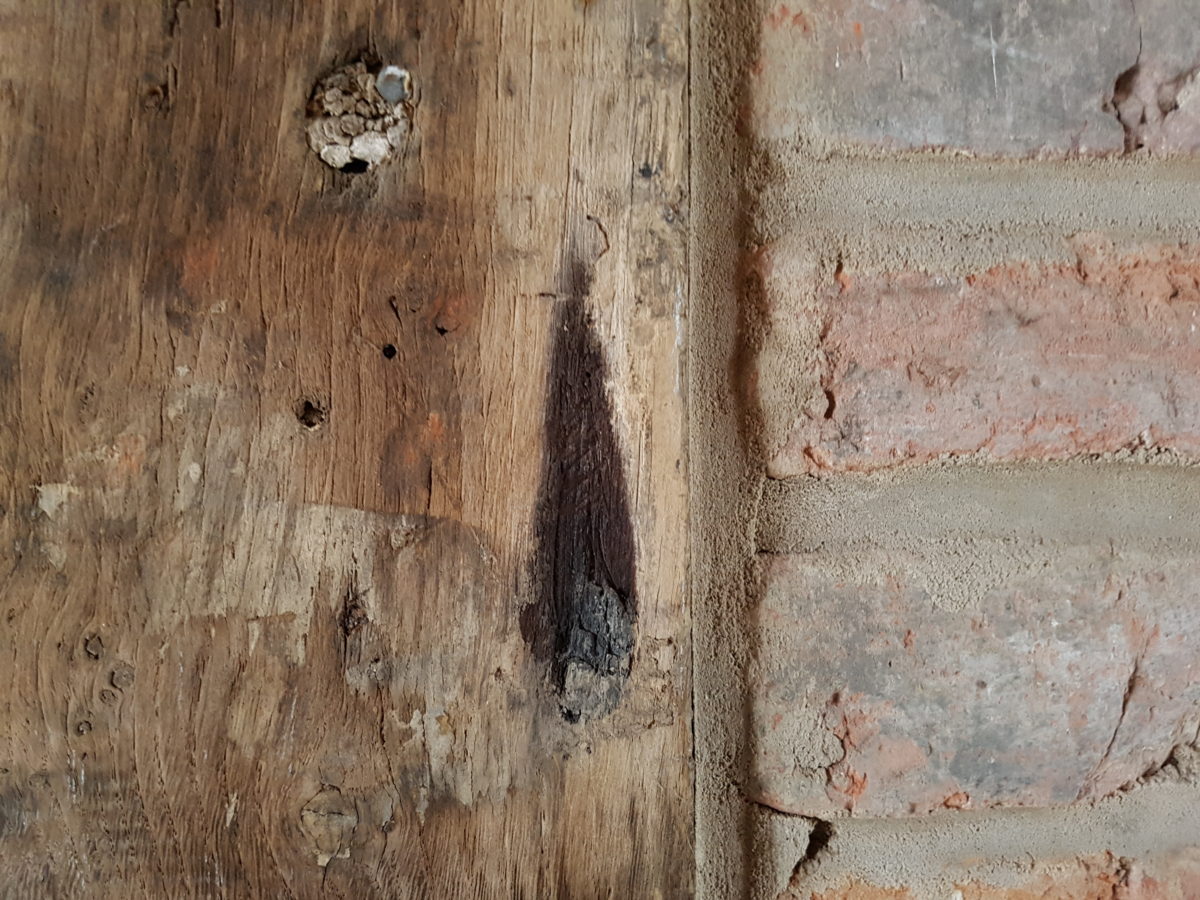Subject Introduction: The perceived threat of evil was a genuine fear that was faced by late mediaeval and early modern populations of Europe. Witches, evil spirits and demons were considered to be real entities who posed a danger to buildings and their occupants. During archaeological survey, researchers commonly find evidence for the practice of ritual protection – methods designed to ward away evil and bring good luck to buildings. The following lectures look at the physical evidence for the different ways that our historic buildings were protected from evil…

Dealing with the Devil: The Hellish Fears of Mediaeval & Early Modern Britain
An overview of just why folk were so terrified of demonic threats to their world in the late mediaeval and early modern periods (c 1350 – c 1700). Given such a widespread and genuine belief that the Devil was stalking the land, this lecture looks at the various ways in which people attempted to protect their buildings from evil. These folk traditions often leave tangible remains in the archaeological record including ritual protection graffiti, concealed artefacts and burn marks on the walls. The discovery and interpretation of such finds allows us to trace the lost belief systems connected to the fear of Satan himself…

Cultural Anxieties and Ritual Protection in High Status Early Modern Houses
The sixteenth and seventeenth centuries were marked by a radical increase in the numbers of accusations of witchcraft throughout Europe. Evil incarnate was a real fear for the populace leading to a raft of folk-traditions being employed to protect house and home from possession. Using the case studies of the Tower of London and Knole, Kent this lecture presents and explains how the houses of the rich were given spiritual protection from demonic forces. This lecture is available to view online via the Hidden Charms Conference

How To Deflect Your Demons – Ritual Protection of Hearth & Home
Physical objects have been placed behind the walls, under the thresholds and within the hearths of historic buildings for centuries. Discoveries of dried cats, witch bottles and ancient shoes have become common during building works. The explanation for these items is less common – as they were often deliberately placed to ritually protect house and occupants from evil spirits, witches and demons…

Burn Marks: Ritual Behaviour in Historic Timber-framed Buildings
Have you ever noticed strange, tear-shaped scorch marks on timbers in historic buildings? Most people tend to assume that they were left their by the unattended candles of careless occupants. Based on fieldwork survey, research and experimental archaeology this talk demonstrates that such marks are evidence of a number of ritual practices in the mediaeval and early modern periods linked to a desire to bring good luck and avert evil…

Tower of Strength: Buildings archaeology and apotropaic motifs in elite architecture
The use of ritual protection marks – pentagrams, compass-drawn circles, M and double-V symbols – have been widely debated in recent years but, with firm corroborative documentary evidence still absent from the record, the discipline of buildings archaeology may be able to add new perspectives to this discourse. Using examples of ritual protection motifs from current research, a multidisciplinary approach demonstrates that informal apotropaic graffiti was part of a much wider architectural tradition – one that was rooted in the heart of all levels of mediaeval and early modern societies from tenant farmers to artisans to the aristocracy.

“The instruments of darkness tell us truths” – Recent discoveries of ritual protection marks at Knole, Kent
An historic building survey at Knole, Kent enabled a very surprising revelation about the history of the house in the early 17th century. A series of symbols beneath the floorboards carved by the carpenters working at the house were intended to protect the building from possession by witches, demons and evil spirits. Further research showed that the symbols were related to James I, witch trials and the Gunpowder Plot. This lecture is available to view online via Gresham College

